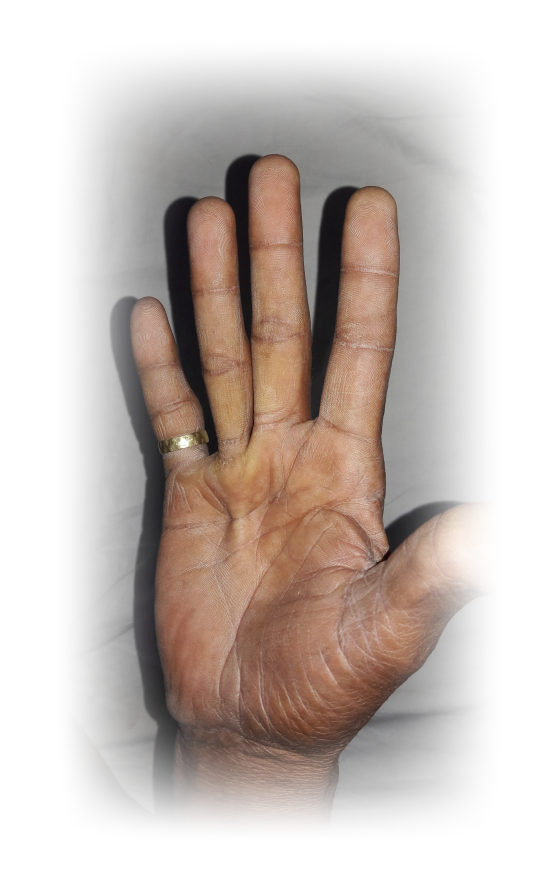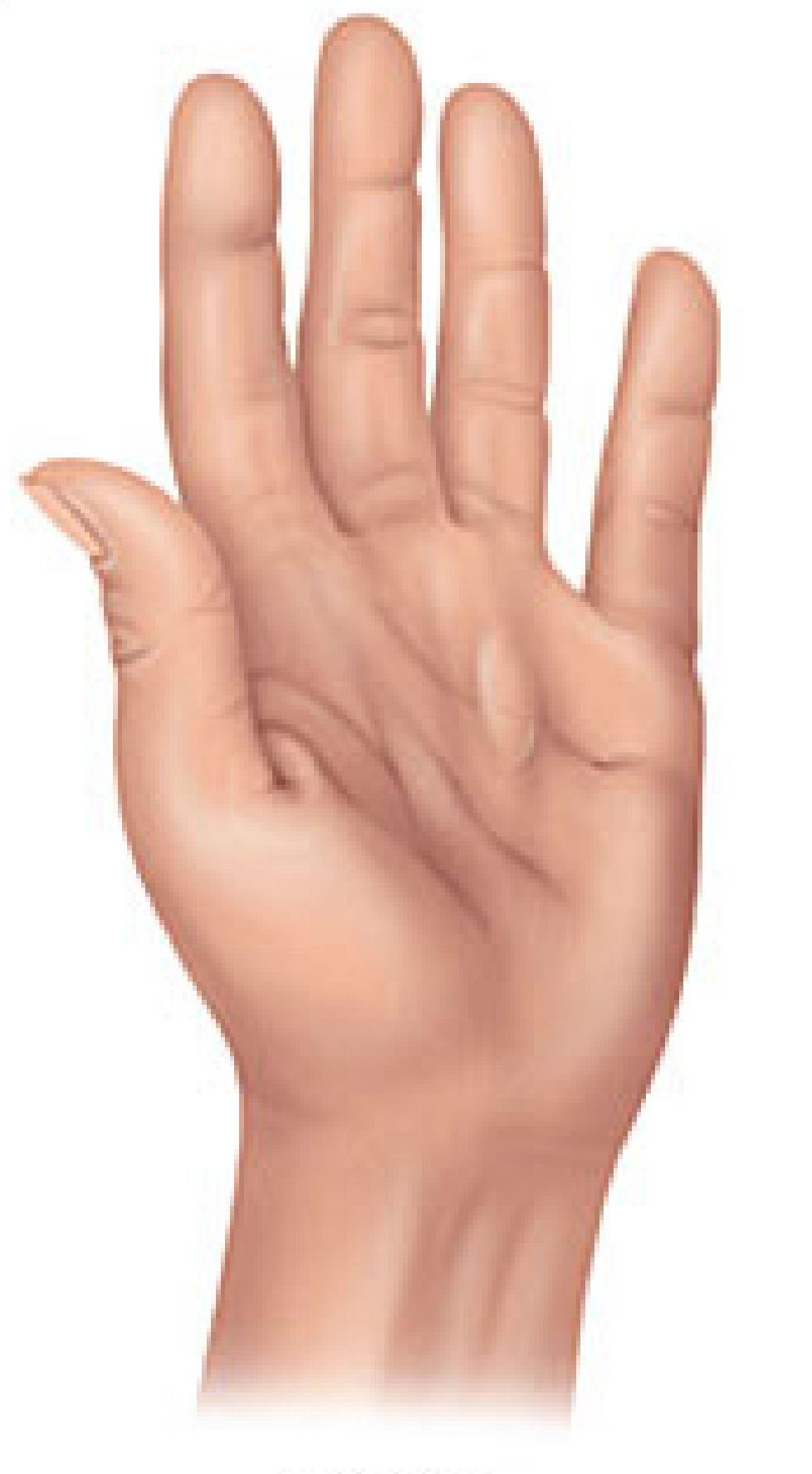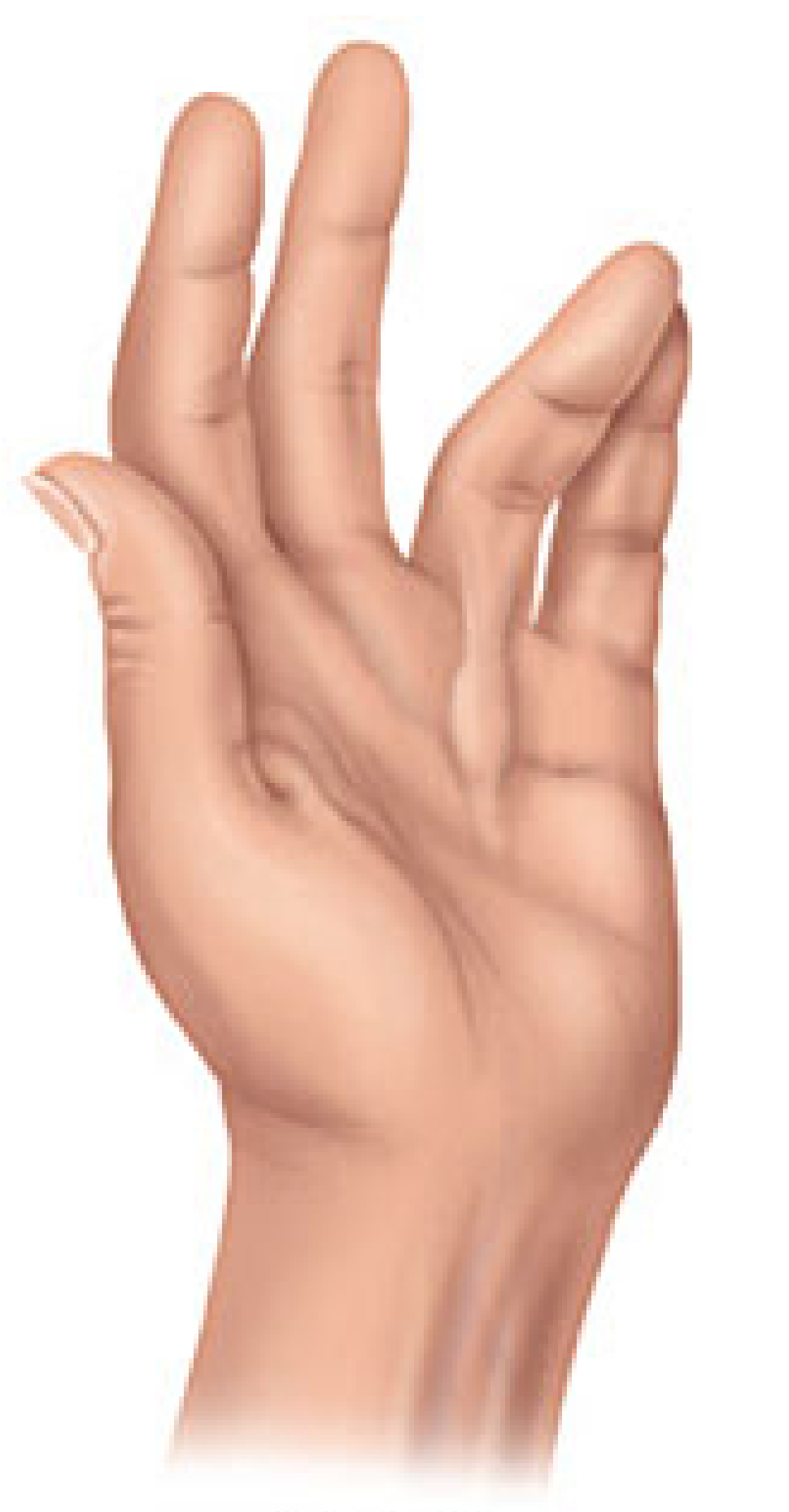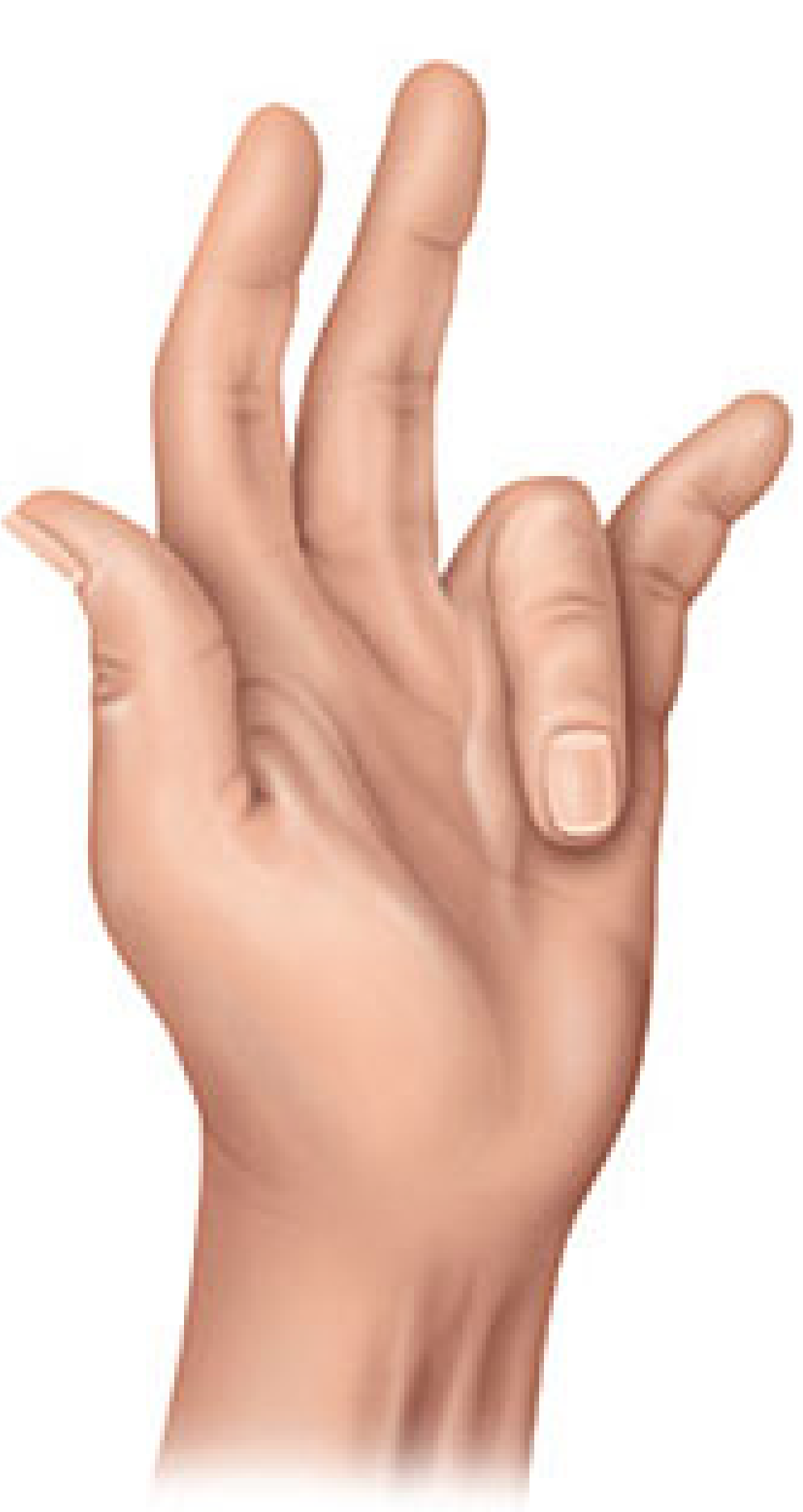Dupuytren's Contracture-Causes, Symptoms and Treatments
Dupuytren's Contracture-Causes, Symptoms and Treatments
Reviewed By doctors of Asia Medical Specialists
(Last updated on: July 7th 2021)
What is Dupuytren’s contracture
 |
Dupuytren's contracture (also known as Viking disease, Celtic hand, Morbus dupuytren) is deformity condition that the fingers (in most cases, the little or ring finger[1]) bent in a flexion position permanently. This condition is a disorder of the connective tissue. The condition is a result of thickening and shortening of the connective tissues in the hand, including the fascia (fat and bands of fibrous tissue); the skin are also involved[2].
Dupuytren's contracture symptoms
The development over Dupuytren's contracture can be slow over years and can occur in both hands while the ring finger and little finger are most commonly affected.
Early signs of Dupuytren’s contracture[3]:
- Thickening of the skin on the palm
- Forming of small, hard nodules just under the skin of the palm
- Skin on palm puckered or dimpled
- Nodule feel tender but not painful
Later stage of Dupuytren’s contracture
- Cords of tissues form under the skin shortened and tightened, starting to impair the finger function.
- As the cords tighten, they pull the fingers in toward the palm and show difficulty to straighten out the fingers
- Difficult to place the palm flat on the surface or opening the hand fully.
- Sensation of pain, itching and aching developed with the contractions.
- Decrease the person’s ability to hold large objects and make simple movements like washing face or putting on gloves
Grading over Dupuytren's contracture disease
| GRADE 1 | GRADE 2 | GRADE 3 |
 |  |  |
| Thickened nodule and a band in palmer that have skin tethering, puckering or pitting | A visible rope like cord that limits the extension of the finger | Finger bended towards the palm |
Dupuytren's contracture causes
Though dupuytren's contracture has been reported as early as in the 1600s, at this stage, the actual causes of Dupuytren's contracture is yet to be known. Currently there is no solid evidence that hand injuries or occupations that involve vibration to the hands cause the condition. However there are some risk factors that may increase the risk of the disease.
- Age: Statistically, Dupuytren's contracture occurs most commonly after the age of 50
- Gender: Male are more likely to develop this disease and to have more severe condition than women
- Ancestry: A person with a heritage of Northern European Decent are at higher risk of the disease. For ethnic groups such as Chinese and Africans, Dupuytrens is unusual.
- Family history: it was found that usually Dupuytren's contracture runs in the families
- Tobacco and alcohol use: Smoking and alcoholism are also associated with Dupuytren's contracture
- Chronic illness: Diabetes person are also reported to have an increased risk of the condition
Dupuytren's contracture diagnosis
- Look and feel: comparing the hands to each other and check for pits and grooves on the skin of the palms
- Table top test: placing the hand flat on a table palm down to see if it lies flat. (IMAGE required)
- Grip Test: To test how well you can grasp an object with your hands (Usually not affect)
- X-rays sometimes are ordered to examine if the deformity is due to other contributing, bony abnormalities
Other Diagnosis
Dupuytren's contracture diseases can also be confused with other diseases of the hand such as stenosing flexor tenosynovitis (trigger finger), ganglion cysts, and soft tissue masses.
| Similiar Symptoms | Possible Cause |
| Small, soft lump on finger joints/wrists | Ganglion cysts |
| Finger “lock” at bend position | Trigger Finger |
| Rough, hard and raised skin on the palms | Calluses |
Dupuytren's contracture treatment
Depending on the severity, doctors might even not recommend any treatment as the condition may not worsen. Recommendation of treatments follows:
- Injecting the lumps with a corticosteroid to ease the inflammation.
- Injecting enzymes into the palm to weaken the bands, and the doctor will move the hands until the bands are broken and the fingers can be straightened. Currently, this drug is not available in HK
- Minor surgical procedure: This would be recommended if there is impaired functionality or severe contracture. The common option is an open regional fasciectomy, which is performed under general anaesthetic as an outpatient procedure.
Dupuytren's contracture treatment –Open regional fasciectomy
This treatment is usually performed when the condition of the contracture is more severe. Comparing to fasciotomy, theoretically, it is more effective in long run, however the risk may be relatively higher.
- An incision is made in your hand at the location of the affected connective tissue
- The connective tissue that are affected will be removed. The degree of the connective tissues have to be removed depends on the condition.
- Short segments of the cord are removed through one or more small incision is called segmental fasciectomy.
- Regional fasciectomy means the entire cord is removed through a single longer incision and
- Dermo fasciectomy mans the entire cord and overlying skin is removed.
- A skin graft may be used to seal your wound. (For dermo fasciectomy)
[1] "Dupuytren contracture". Genetics Home Reference. US: National Library of Health, National Institutes of Health. (last accessed June 21,2021)
[2] "Dupuytren contracture". Genetics Home Reference. US: National Library of Health, National Institutes of Health. (last accessed June 21,2021)
[3] Walthall J, Rehman UH. Dupuytrens Contracture. InStatPearls [Internet] 2019 Feb 19. StatPearls Publishing.Available from:https://www.ncbi.nlm.nih.gov/books/NBK526074/ (last accessed June 21,2021)
